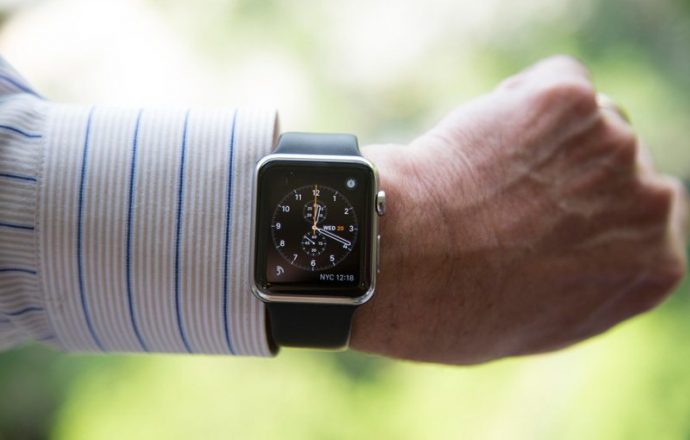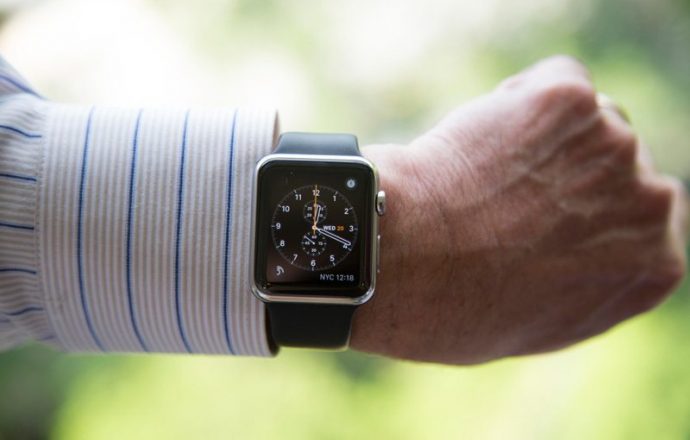Once it was out, discussion focused on its projected sales. Now, everybody wants to know how the Apple Watches will influence sales of mechanical watches as well as the large Swiss brands. Apple’s quite tight-lipped about the Apple Watch’s earnings amounts, but we do understand it dominates the market for smart watches, though it hasn’t really caught up to other
 wearables. But as much as Swiss luxury watches are involved, reports of its impending demise may be somewhat early. There are tons of armchair skeptics out there who dismiss mechanical watches:”Why do I need a watch when my telephone let the time just fine?” And we recommend you to think about this one: Why do you have to take your cellphone around when the Apple Watch includes a lot of the specific same functionality on your wrist? It all depends on what you love. Obviously, at this time, the Apple Watches stays determined with a Bluetooth connection to get its own info, and it’s a count from it. That and the fact that you need to control it. It has the benefit, in that respect. The capacity to monitor exercise performance isn’t within the domain of mechanical watches–unless you count the chronograph or the pulsometer or the inclusion of a device such as the Chronos. And when a mechanical watch might not be able to send a text or track your everyday action, it might do some pretty awesome things–all with no battery. A mechanical watch is built with hundreds of little parts functioning together, powered by simply transferring your wrist or the twisting the crown. That is quite impressive in its own right.That the Apple Watch is much more a threat to mid economy view makers, but we could see a”trickle up” effect, since this is where prospective luxury watch buyers receive their beginning. A brand-new luxury watch begins depreciating in value the minute it’s sold. However, after a couple of years, its cost and depreciation speed level out along with the watch’s value remains fairly consistent. Considering that Apple introduces new technology, it finally makes its current offerings obsolete. Progress is the entire point of technologies, and those Apple Watch early adopters will gradually see their Series 1 become redundant because Apple presents newer iterations and updates its OS. One of the biggest drawbacks to this Apple Watch must be its relatively short life cycle. We all know that Apple’s product cycle cannibalizes its previous product lines (such as the recently-axed iPod). Should you purchase an Apple Watch, you purchase it knowing this– finally, it’s likely to quit holding a fee, it’s likely to run slower, and Apple will stop supporting it with OS updates. We have got anecdotes of 50-year-old watches working just fine without assistance, so that tells you that the caliber of this construct of fine timepieces. Obviously, luxury watch brands do innovate, but at a much slower pace, rather than to a level which supersedes older versions. Likewise, the introduction of new models from luxury brands doesn’t destine old watches to the garbage pile. It is difficult to compare aesthetics of the Apple View together with the diverse looks of luxury watches. They could not be more distinct. The Apple Watch’s modern design, square and seamless and all clean lines, is equally attractive for sure. You have the option to customize your view face with both analog and digital options, and also the watchOS is not difficult to navigate. However, if the watch is still inactive, it is only a black screen.
wearables. But as much as Swiss luxury watches are involved, reports of its impending demise may be somewhat early. There are tons of armchair skeptics out there who dismiss mechanical watches:”Why do I need a watch when my telephone let the time just fine?” And we recommend you to think about this one: Why do you have to take your cellphone around when the Apple Watch includes a lot of the specific same functionality on your wrist? It all depends on what you love. Obviously, at this time, the Apple Watches stays determined with a Bluetooth connection to get its own info, and it’s a count from it. That and the fact that you need to control it. It has the benefit, in that respect. The capacity to monitor exercise performance isn’t within the domain of mechanical watches–unless you count the chronograph or the pulsometer or the inclusion of a device such as the Chronos. And when a mechanical watch might not be able to send a text or track your everyday action, it might do some pretty awesome things–all with no battery. A mechanical watch is built with hundreds of little parts functioning together, powered by simply transferring your wrist or the twisting the crown. That is quite impressive in its own right.That the Apple Watch is much more a threat to mid economy view makers, but we could see a”trickle up” effect, since this is where prospective luxury watch buyers receive their beginning. A brand-new luxury watch begins depreciating in value the minute it’s sold. However, after a couple of years, its cost and depreciation speed level out along with the watch’s value remains fairly consistent. Considering that Apple introduces new technology, it finally makes its current offerings obsolete. Progress is the entire point of technologies, and those Apple Watch early adopters will gradually see their Series 1 become redundant because Apple presents newer iterations and updates its OS. One of the biggest drawbacks to this Apple Watch must be its relatively short life cycle. We all know that Apple’s product cycle cannibalizes its previous product lines (such as the recently-axed iPod). Should you purchase an Apple Watch, you purchase it knowing this– finally, it’s likely to quit holding a fee, it’s likely to run slower, and Apple will stop supporting it with OS updates. We have got anecdotes of 50-year-old watches working just fine without assistance, so that tells you that the caliber of this construct of fine timepieces. Obviously, luxury watch brands do innovate, but at a much slower pace, rather than to a level which supersedes older versions. Likewise, the introduction of new models from luxury brands doesn’t destine old watches to the garbage pile. It is difficult to compare aesthetics of the Apple View together with the diverse looks of luxury watches. They could not be more distinct. The Apple Watch’s modern design, square and seamless and all clean lines, is equally attractive for sure. You have the option to customize your view face with both analog and digital options, and also the watchOS is not difficult to navigate. However, if the watch is still inactive, it is only a black screen.

An OMEGA is not like a Rolex is not just like a Patek Philippe is not like a Hublot. You customize a luxury watches by picking a brand or style you like. To make sure, the luxury watch market has its own problems to manage. And certainly, it could use a dose of humble pie. However, we do not purchase the claim that the Apple Watch and its popularity suggests that the conclusion of luxury watches. They appeal to different people. And, wearables and intelligent watches represent an chance for wristwear to achieve a wider, younger market. Our conclusion?

